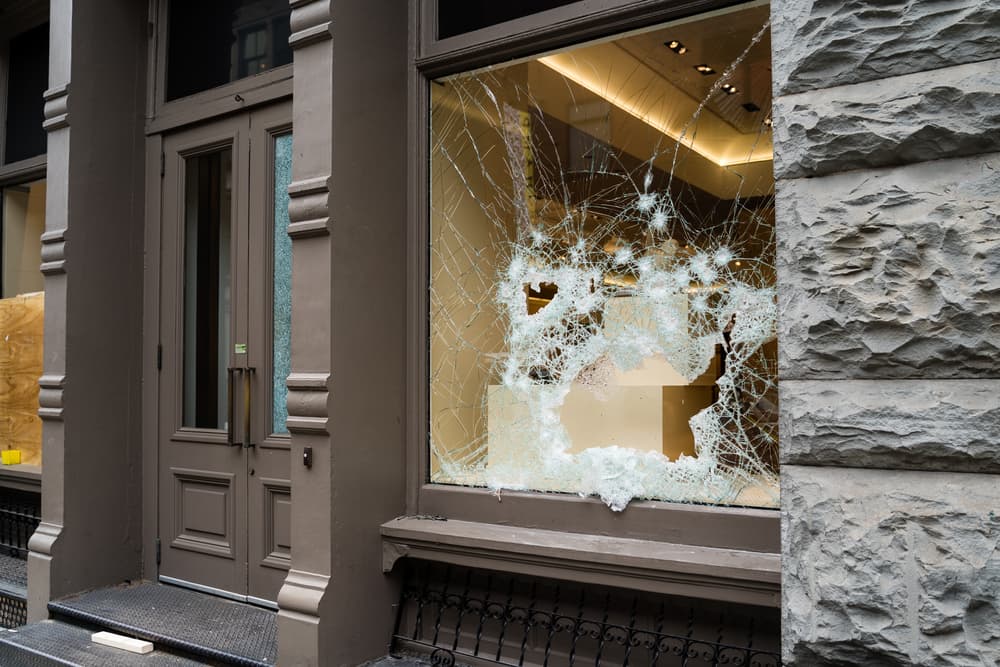Defenses for Vandalism Charges

Vandalism, which is the intentional destruction, defacement, or damage to another person’s property, is a broad term that encompasses several types of criminal acts. Understanding the defenses to vandalism charges is important for both lawyers and defendants.
Talk to a Vandalism Defense Lawyer First
If you’ve been charged locally for vandalism, you need to work with a local vandalism defense lawyer. Their skills can make the difference between a harsher sentence and punishment and a better outcome for your defense.
Types of Vandalism
Before we review the defenses for vandalism, it helps to review the types of crimes involving the act.
Graffiti and Street Art

Graffiti is one of the most common forms of vandalism, which is the unauthorized marking of public or private property with paint, markers, or other materials. While some communities have accepted certain forms of street art, unauthorized graffiti is a criminal offense in most places.
The difference between criminal vandalism and legitimate art is often due to property owner consent and local ordinances on public art.
Property Damage
Physical property damage is a big category of vandalism. It can include breaking windows, damaging vehicles, destroying landscaping, or tampering with the public infrastructure.
The severity of the charges often depends on the extent of the damage and the type of property affected, with public or historical properties carrying higher penalties.
Digital Vandalism
In this day and age, vandalism has gone digital. It includes unauthorized access to computer systems, website defacement, and intentional malware spreading. For instance, Wikipedia vandals may write their names, comment inappropriately, or include jokes in the content.
Digital or cyber vandalism can result in criminal and civil charges, especially when it disrupts business operations or compromises sensitive information.
Common Defenses for Vandalism
Lack of Intent
One of the best defenses against vandalism charges is to show a lack of criminal intent. Vandalism requires proof that the defendant acted willfully or maliciously. This may be a valid defense if the damage was accidental or through negligence rather than a deliberate act.
For example, a person who accidentally breaks a window while playing baseball may not be charged with vandalism if they can prove the damage was unintended.
Consent of the Owner
Property owner consent is a complete defense to vandalism charges. If the defendant can prove he had explicit or implied permission to modify or alter the property, they are not guilty of a vandalism charge.
Documentation of consent, such as a written agreement or witness testimony, strengthens this defense.
Mistake of Fact
A defendant can argue they acted under a reasonable mistake of fact as to their right to modify or alter the property. For example, if someone damages a property they believed they owned or had the authority to modify, this mistake may be a defense.
Self-Defense or Defense of Property
In some cases, acts that would be vandalism may be justified as a necessary self-defense or defense of property. If someone damages a property while defending himself or his belongings from immediate harm or theft, this necessity may be a defense.
Age and Capacity
Juvenile status or diminished capacity can affect how vandalism charges are handled. Young offenders, especially first-time offenders, may be eligible for diversion programs or lighter penalties.
Similarly, individuals with mental health conditions that affect their ability to understand the consequences of their actions may have a defense based on diminished capacity.
Constitutional Defenses
In some cases, especially those involving expressive conduct or protest activities, defendants may raise constitutional defenses based on their First Amendment rights. While the First Amendment does not protect vandalism per se, cases involving political expression or artistic speech may be given special consideration. Courts must balance property rights against protected expression.
Procedural and Evidentiary Defenses

Chain of Custody
Challenging the chain of custody can be a strong defense in vandalism cases. If the police failed to collect, document, or preserve evidence of the damage, this can weaken the prosecution’s case.
Identification Issues
Misidentification is another defense, especially in cases of graffiti or nighttime vandalism. The prosecution must prove beyond reasonable doubt that the defendant committed the act. Poor lighting, distance, or unreliable witness identification can create reasonable doubt as to the perpetrator’s identity.
Improper Police Procedures
Violations of constitutional rights during an investigation or arrest can result in evidence suppression. If the police conducted illegal searches, failed to get the necessary warrants, or violated Miranda rights, the resulting evidence may be excluded from trial.
Mitigating Factors and Alternative Resolutions

Restitution Agreements
Many jurisdictions offer alternative resolution options for vandalism cases, especially when the defendant agrees to make restitution. Paying for the damages and showing remorse can result in reduced charges or deferred prosecution agreements.
Community Service
Courts often impose community service as part of the resolution in vandalism cases. It benefits the community and may help the offender develop a respect for public and private property.
Strategic Considerations
Documentation and Evidence Gathering
A strong defense requires thorough documentation of the incident and the surrounding circumstances. It includes photographing the alleged damage, getting witness statements, and preserving any surveillance footage or communications that support the defense.
Expert Testimony
Expert witnesses can strengthen the defense in complicated cases by providing technical analysis of the damage, cost estimates, or opinions on causation. Experts can challenge the prosecution’s evidence and support alternative explanations for the property damage.
Negotiation Strategies
Early intervention and negotiation with the prosecutor often yield better results. Defense attorneys can use mitigating factors such as the defendant’s clean record, willingness to make restitution or community ties to negotiate reduced charges or alternative resolutions.
Schedule a Free Case Review with a Vandalism Defense Lawyer
If you’ve been arrested for vandalism, you need professional legal representation. Call a vandalism defense attorney to ensure better results. By choosing the right attorney, you can face the future more positively. Contact a vandalism defense attorney now.
A criminal defense attorney in Burbank can help you get a clear understanding of the charges against you and the potential defenses available. An experienced vandalism defense lawyer will carefully evaluate the evidence, identify any weaknesses in the prosecution’s case, and work tirelessly to protect your rights and achieve the best possible outcome for your situation.

